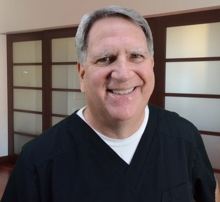What is Dry Needling and What is it Used For?
- 08, 24, 2014
- / Category Uncategorized
- / Posted By admin
- / No Comments.
You may have already heard the term dry needling. This is a type of treatment that originated in the 1950’s as a result of research performed by none other than the medical doctor that would eventually become President Kennedy’s personal physician, Dr. Janet Travell.
The curious name “dry needling” begs explanation. The origin of the name is really quite simple.
Dr. Travell, a doctor practicing in Massachusetts had developed a very successful regimen of treatment for chronic pain that involved injection of hardened muscle knots with various medications. During the course of her experiments she discovered that she could often just as effectively bring relief to ailing patients by inserting an empty hypodermic syringe into the painful muscle and manipulating the empty syringe needle as if she had actually injected medication into the tissue.
In her descriptions of the newfound technique, she attempted to distinguish the method by noting that the needle contained no medication. In contrast to what she termed a “wet needle” i.e. that which contained a fluid such as medication or saline solution, she termed the new method “dry needling.” It was simply a designation that she was using a syringe needle but it contained no fluid or medication of any kind.
She further developed the explanation that the mechanical disruption of the pathologically contracted muscle fibers by the insertion of the needle was the event that created the healing reaction later exhibited by the body.
This innovative technique eventually was brought to the attention of then Senator Kennedy because he suffered from terrible chronic back pain. He became such a fan of the technique that when he was elected president he appointed Dr. Travell to be the first female White House Physician. (In other words, the treatment works.) Dr. Travell attended President Kennedy, his family, staffers and many eminent guests of the White House.
Because of Travell’s fame that came with this esteemed position, her research into dry needling was exposed to the medical community. She was a tireless, meticulous researcher. Along with Dr. David Simons, she published an extremely detailed two volume text that explained her research, the proposed mechanism of action of the treatment and expertly illustrated drawings showing the likely position of typical trigger points in every major muscle in the body as well as the most common pain referral patterns that would result.
Fast forward to today, seven decades later, and Travell’s work is immortalized in the techniques being carried out in hundreds of thousands of therapists and doctors offices around the world. In virtually every community in the United States and most developed nations there is someone using the methods promoted by Dr. Travell to help resolve pain for patients. I personally use this technique every day.
Trigger points as defined and explained by Dr. Travell, are treated by all kinds of practitioners.
Licensed massage therapists, physical therapists, and chiropractic doctors routinely use manual methods to locate and eliminate trigger points, much to the relief of their patients. Research has borne out that trigger points can be successfully treated with a variety of manual methods, including percussion (tapping or pounding), kneading, stretching, application of cold sprays and electrical stimulation devices. These methods work well.
In other clinics, professionals such as MD’s (physiatrists, orthopedists, anesthesiologists, physicians assistants, nurse anesthetists, nurse practitioners and others) are busy treating trigger points using Travell’s early technique “wet needling,” by injecting various medications or other fluids into the belly of the contracted muscle knot. Like the manual methods, these techniques work well, too.
Licensed healthcare professionals such as chiropractors and physical therapists throughout the country are treating painful trigger points with dry needling. Syringe needles are no longer used, instead being replaced by smaller, fine solid needles for patient comfort. These professionals are dealing with injured and dysfunctional muscles daily as part of their normal routine so it is natural that they would embrace dry needling as an expedient method to bring relief to patients.
And expedient it is. In my own clinic I have often seen patients find relief from long standing painful joints and muscle issues after a receiving dry needling. The procedure is extremely safe, relatively free of side effects and inexpensive compared to alternatives.
Dr. Mark Kestner
Ready to learn more? Call us for a free consultation: (615) 895-1835
Although the internet is a great place to do searches for information, you will learn more by visiting us for a friendly, free initial consultation.
Come check us out! We welcome visitors, curious seekers and even skeptics.
We realize that acupuncture is new to many people, even though it has been around for thousands of years.
We promise that you will feel completely comfortable at all times and that we will provide helpful information to assist you in making decisions about your healthcare decisions.
We look forward to meeting you!
Want to get results faster? Call us now at (615) 895-1835
We welcome your e-mail contact, but we encourage you to accept our invitation to a friendly, free initial consultation.
You will sit with our doctor and discuss your specific needs. Ask any questions about any aspect of the treatment, fees, results or anything else.
Just call (615) 895-1835. We will schedule a convenient time for your visit.
We look forward to meeting you!
*If you decide that acupuncture is right for you, the sooner you call the sooner you can be feeling better! Don't put it off... the only thing you have to lose is your pain!

Leave a Reply